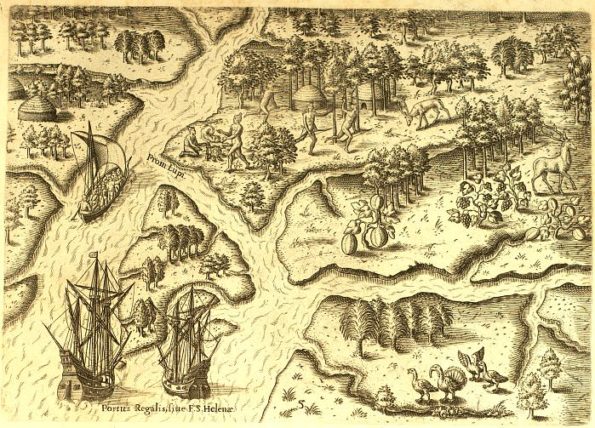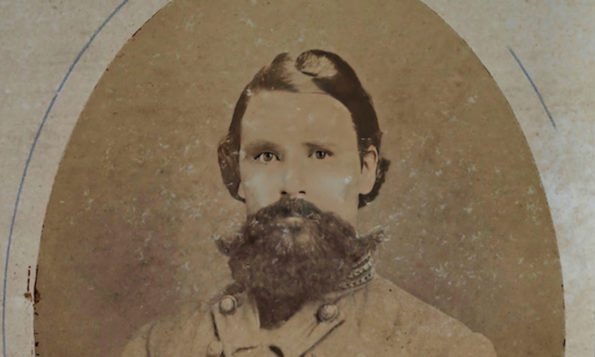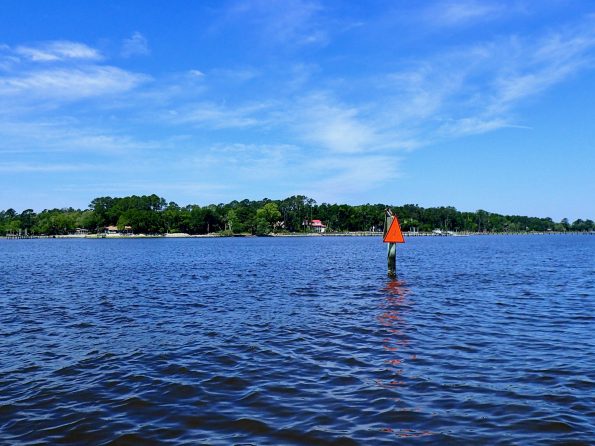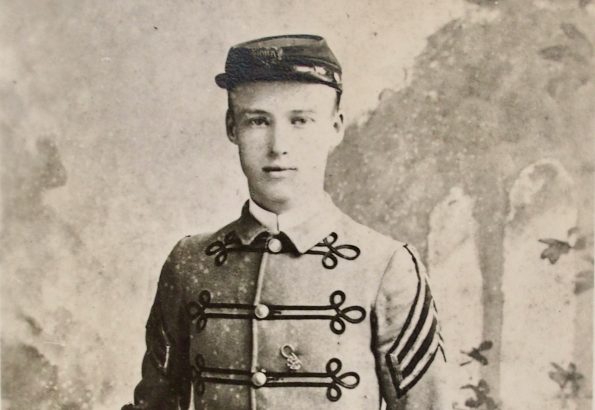Bill Riski is a retired USAF Officer and systems engineer. His hobbies include history, photography, writing, and travel. Maintaining this website is a labor of love for the Dataw Historic Foundation in the Lowcountry of South Carolina, where he and his wife now live.
Sometimes taking a long view of history provides an insightful perspective on the lives of others. A few years ago, I compiled a timeline of U.S. Presidents who were in office during the antebellum era of the Sams of South Carolina. I focused on William Sams and two particular sons, Lewis Reeve Sams and Dr. Berners Barnwell Sams, M.D. The timeline starts in 1783, when William Sams, at 42, left Wadmalaw Island and moved his family to Beaufort and Datha Island. It ends with the Great Gun Shoot / Big Skedaddle of 1861. The graphic integrates the lives of William, Elizabeth, Lewis Reeve Sams, and his brother Dr. Berners Barnwell Sams, M.D. — with — the terms of our first 16 presidents
Peaceful Retreat plantation home of Robert Gibbes and his wife Sarah (Reeve) Gibbes. On the Stono River, John’s Island, SC. There is so much to say about this woman. She…
We have often told you how the events of Nov 7, 1861, led to the immediate evacuation of all plantation owners from Beaufort District. And you’ve heard most lost everything as a result. The Federal government, of course, fully intended to shut the door on the old South. A war was going on, and both sides needed to fund their war efforts. For the Federal government, the legal steps started with the Direct Tax Act of August 1861, which levied taxes on all states and was amended in June 1862 to include the rebellious states as well. This led to Federally appointed tax commissioners arriving in Beaufort later that year. Foreclosures on South Carolina homes and land followed. This included all of the Sams real estate in the Beaufort District. However, there is more to the story. Thirty years later, the Federal Government compensated the Sams heirs and others for their confiscated real estate.
Like all of the United States, the Lowcountry was inhabited by indigenous peoples when Bonum Sams II (1663 ~ 1743) and John Barnwell (1771 – 1724) immigrated here in 1681 and 1701, respectively. Long before William Sams (1747 – 1798) bought Datha Island in 1783, the conflicts between Europeans and American Indians had played out here in the Lowcountry. The American Indians were gone from this corner of South Carolina. It may surprise you to know that nineteen American Indian tribes lived in our area at one time. We are reminded of the American Indians by the river/estuary names even today.
Horace Hann Sams (1829-1865) is one of the four Beaufort men I wrote about earlier who died in the Civil War. Today I dig deeper into Major HH Sams life and legacy. It becomes clear from contemporary accounts about him what drove this southern soldier in our American Civil War. Those he left behind were deeply affected by their loss. To paraphrase novelist Mitch Albom, his death ended a life, not a relationship. His older brother Rev. James Julius Sams, carries his sorrow into the memoir he wrote 40 years later.
By now, most of you will have received the Spring Edition 2022 of the Dataw Historic Foundation’s Tabby Times. This is the “live” version of the beautiful cover article written…
The wind was blowing at ten knots, the tide was low, clouds hovered over the Morgan River when the Dataw Historic Foundation entered a new research project using 21st-century technology.…
Several years ago (2006 – 2009), DHF had some preservation work done to the brick wall around the Sams Family Cemetery near the plantation house tabby ruins. We discovered several buried pieces of marble, and the adventure began. This is the story of the final resting place of Sarah (Fripp) Sams (1789 – 1825), the first wife of Lewis Reeve Sams (1784 – 1856).
I told you recently about the tripartite plantation house of BB Sams and his wife Elizabeth (Fripp) Sams. These ruins are always the highlight of the DHF docents’ tours to residents and visitors. The other site of interest is the Sams Family Cemetery, a short distance from the ruins. I wrote about this 200-year-old cemetery on Datha Island just two years ago, and there has been an exciting development. Synthesizing the research Teresa (Winters) Bridges (Sams descendant) has done in the last two years with the results of the ground-penetrating radar survey performed in 2005, I can say with confidence that her ancestor John Sams (1769-1798) is buried here on Datha.

For centuries the ultimate enabler of an individual’s wealth was land ownership. This was certainly true in the Lowcountry, as rice, lumber, indigo, cattle, and cotton crops created tensions over land. One of the early and successful indigo plantation owners on a sea island was Robert Sams (~1706 – 1760), father of “our” William Sams (1741 – 1798). Robert was a planter up on Wadmalaw Island. As the American Revolution took a toll on the sale of indigo dye cakes to the British, a new sea island-compatible crop was arriving. Sea island cotton’s exceptional quality and world events in France and England drove Europe’s demand. It was first grown commercially on Hilton Head in 1795, and by 1810 nearly all the suitable cotton land in our area was spoken for. This brings us on a fast trip to the Datha Island plantation brothers, Lewis Reeve Sams (1784 – 1856) and Berners Barnwell Sams (1787 – 1855). They inherited Datha Island from their father and mother once they came of age, in 1805 and 1808, respectively. LR Sams had Datha Point plantation on the north, and BB Sams had Datha Inlet plantation on the south.
As Dr. Rowland tells us in his first volume of The History of Beaufort County, South Carolina (1514 – 1861) by 1850:
“Dr. Berners Barnwell Sams had 2,097 acres and 174 enslaved people on Datha and Lady’s Island…His brother Lewis Reeve Sams had 1,467 acres and 166 enslaved people on adjoining property…”
It wasn’t Datha alone that afforded the brothers, and their children, the luxury of elegant homes in Beaufort. It was the totality of their holdings.
Sometimes luck is due to your hard work. Other times it comes from factors that cannot be explained or are beyond your control. Wars have a way of stringing together events that leave in their wake both the fortunate and unfortunate. This week I identify four Sams who died on the eve of, or during, the Civil War. They range in age from 16 to 36. There were many more Sams who served and came home to live another day. These four did not.
April holds a special place in the history of the United States. From where I sit today, in the heart of the South, its significance cannot be overlooked. On Friday, April 12, 1861, the Battle of Fort Sumter began the Civil War. In addition, April events bookend the American Civil War. On April 9, 1865, “the surrender of the Army of Northern Virginia in the McLean House in the village of Appomattox Court House, Virginia signaled the end of the nation’s largest war.” We are fortunate to have some first-person insights into both ends of the war. They come from Robert Oswald Sams, the grandson of “our” Lewis Reeve Sams.












